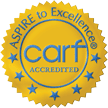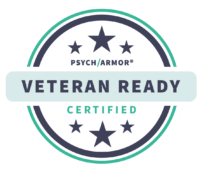Substance Abuse Treatment
Substance Abuse treatment can include behavioral therapy (such as counseling, cognitive therapy, or psychotherapy), medications, or their combination. Behavioral therapies offer people strategies for coping with their addictive substance cravings, teach them ways to avoid addictive substances and prevent relapse, and help them deal with relapse if it occurs.
The best programs provide a combination of therapies and other services to meet the needs of the individual patient, which are shaped by such issues as age, race, culture, sexual orientation, gender, pregnancy, parenting, housing, and employment, as well as physical and sexual abuse.
Drug addiction is a complex but treatable disease. It is characterized by compulsive drug craving, seeking, and use that persist even in the face of severe adverse consequences. For many people, drug abuse becomes chronic, with relapses possible even after long periods of abstinence. In fact, relapse to drug abuse occurs at rates similar to those for other well-characterized, chronic medical illnesses such as diabetes, hypertension, and asthma. As a chronic, recurring illness, addiction may require repeated episodes of treatment before sustained abstinence is achieved. Through treatment tailored to individual needs, people with drug addiction can recover and lead productive lives.
The ultimate goal of drug addiction treatment is to enable an individual to achieve lasting abstinence, but the immediate goals are to reduce drug abuse, improve the patient’s ability to function, and minimize the medical and social complications of drug abuse and addiction. Like people with diabetes or heart disease, people in treatment for drug addiction will also need to change their behavior to adopt a more healthful lifestyle.
In 2006, 23.6 million persons aged 12 or older needed treatment for an illicit drug or alcohol use problem (9.6 percent of the persons aged 12 or older). Of these, 2.5 million (10.8 percent of those who needed treatment) received treatment at a specialty facility. Thus, 21.2 million persons (8.6 percent of the population aged 12 or older) needed treatment for an illicit drug or alcohol use problem but did not receive it. These estimates are similar to the estimates for 2005.*
Untreated substance abuse and addiction add significant costs to families and communities, including those related to violence and property crimes, prison expenses, court and criminal costs, emergency room visits, healthcare utilization, child abuse and neglect, lost child support, foster care and welfare costs, reduced productivity, and unemployment.
The cost to society of illicit drug abuse alone is $181 billion annually.1 When combined with alcohol and tobacco costs, they exceed $500 billion including healthcare, criminal justice, and lost productivity.2,3 Successful drug abuse treatment can help reduce these costs in addition to crime, and the spread of HIV/AIDS, hepatitis, and other infectious diseases. It is estimated that for every dollar spent on addiction treatment programs, there is a $4 to $7 reduction in the cost of drug-related crimes. With some outpatient programs, total savings can exceed costs by a ratio of 12:1.
Basis for Effective Treatment Interventions
Scientific research since the mid-1970s shows that treatment can help many people change destructive behaviors, avoid relapse, and successfully remove themselves from a life of substance abuse and addiction. Recovery from drug addiction is a long-term process and frequently requires multiple episodes of treatment. Based on this research, key principles have been identified that should form the basis of any effective treatment program:
-No single treatment is appropriate for all individuals.
-Treatment needs to be readily available.
-Effective treatment attends to multiple needs of the individual, not just his or her drug addiction.
-An individual’s treatment and services plan must be assessed often and modified to meet the person’s changing needs.
-Remaining in treatment for an adequate period of time is critical for treatment effectiveness.
-Counseling and other behavioral therapies are critical components of virtually all effective treatments for addiction.
-For certain types of disorders, medications are an important element of treatment, especially when combined with counseling and other behavioral therapies.
-Addicted or drug-abusing individuals with coexisting mental disorders should have both disorders treated in an integrated way.
-Medical management of withdrawal syndrome is only the first stage of addiction treatment and by itself does little to change long-term drug use.
-Treatment does not need to be voluntary to be effective.
-Possible drug use during treatment must be monitored continuously.
-Treatment programs should provide assessment for HIV/AIDS, hepatitis B and C, tuberculosis, and other infectious diseases, and should provide counseling to help patients modify or change behaviors that place themselves or others at risk of infection.
-As is the case with other chronic, relapsing diseases, recovery from drug addiction can be a long-term process and typically requires multiple episodes of treatment, including “booster” sessions and other forms of continuing care.
Effective Treatment Intervention Approaches
Medication and behavioral therapy, alone or in combination, are aspects of an overall therapeutic process that often begins with detoxification, followed by treatment and relapse prevention. Easing withdrawal symptoms can be important in the initiation of treatment; preventing relapse is necessary for maintaining its effects. And sometimes, as with other chronic conditions, episodes of relapse may require a return to prior treatment components. A continuum of care that includes a customized treatment regimen, addressing all aspects of an individual’s life, including medical and mental health services, and followup options (e.g., community- or family-based recovery support systems) can be crucial to a person’s success in achieving and maintaining a drug-free lifestyle.
Medications can be used to help with different aspects of the treatment process.
Withdrawal: Medications offer help in suppressing withdrawal symptoms during detoxification. However, medically assisted withdrawal is not in itself “treatment”—it is only the first step in the treatment process. Patients who go through medically assisted withdrawal but do not receive any further treatment show drug abuse patterns similar to those who were never treated.
Treatment: Medications can be used to help re-establish normal brain function and to prevent relapse and diminish cravings throughout the treatment process. Currently, we have medications for opioid (heroin, morphine) and tobacco (nicotine) addiction, and are developing others for treating stimulant (cocaine, methamphetamine) and cannabis (marijuana) addiction.
Methadone and buprenorphine, for example, are effective medications for the treatment of opiate addiction. Acting on the same targets in the brain as heroin and morphine, these medications suppress withdrawal symptoms, and relieve craving for the drug. This helps patients to disengage from drug-seeking and related criminal behavior and be more receptive to behavioral treatments.
Buprenorphine: This is a relatively new and important treatment medication. NIDA-supported basic and clinical research led to its development (Subutex or, in combination with naloxone, Suboxone), and demonstrated it to be a safe and acceptable addiction treatment. While these products were being developed in concert with industry partners, Congress passed the Drug Addiction Treatment Act (DATA 2000), permitting qualified physicians to prescribe narcotic medications (Schedules III to V) for the treatment of opioid addiction. This legislation created a major paradigm shift by allowing access to opiate treatment in a medical setting rather than limiting it to specialized drug treatment clinics. To date, nearly 10,000 physicians have taken the training needed to prescribe these two medications, and nearly 7,000 have registered as potential providers.
Behavioral Treatments help patients engage in the treatment process, modify their attitudes and behaviors related to drug abuse, and increase healthy life skills. Behavioral treatments can also enhance the effectiveness of medications and help people stay in treatment longer.
Residential treatment programs can also be very effective, especially for those with more severe problems. For example, therapeutic communities (TCs) are highly structured programs in which patients remain at a residence, typically for 6 to 12 months. Patients in TCs may include those with relatively long histories of drug addiction, involvement in serious criminal activities, and seriously impaired social functioning. TCs are now also being designed to accommodate the needs of women who are pregnant or have children. The focus of the TC is on the re-socialization of the patient to a drug-free, crime-free lifestyle.
Source: The National Institute on Drug Abuse (NIDA) website (http://www.nida.nih.gov/)



